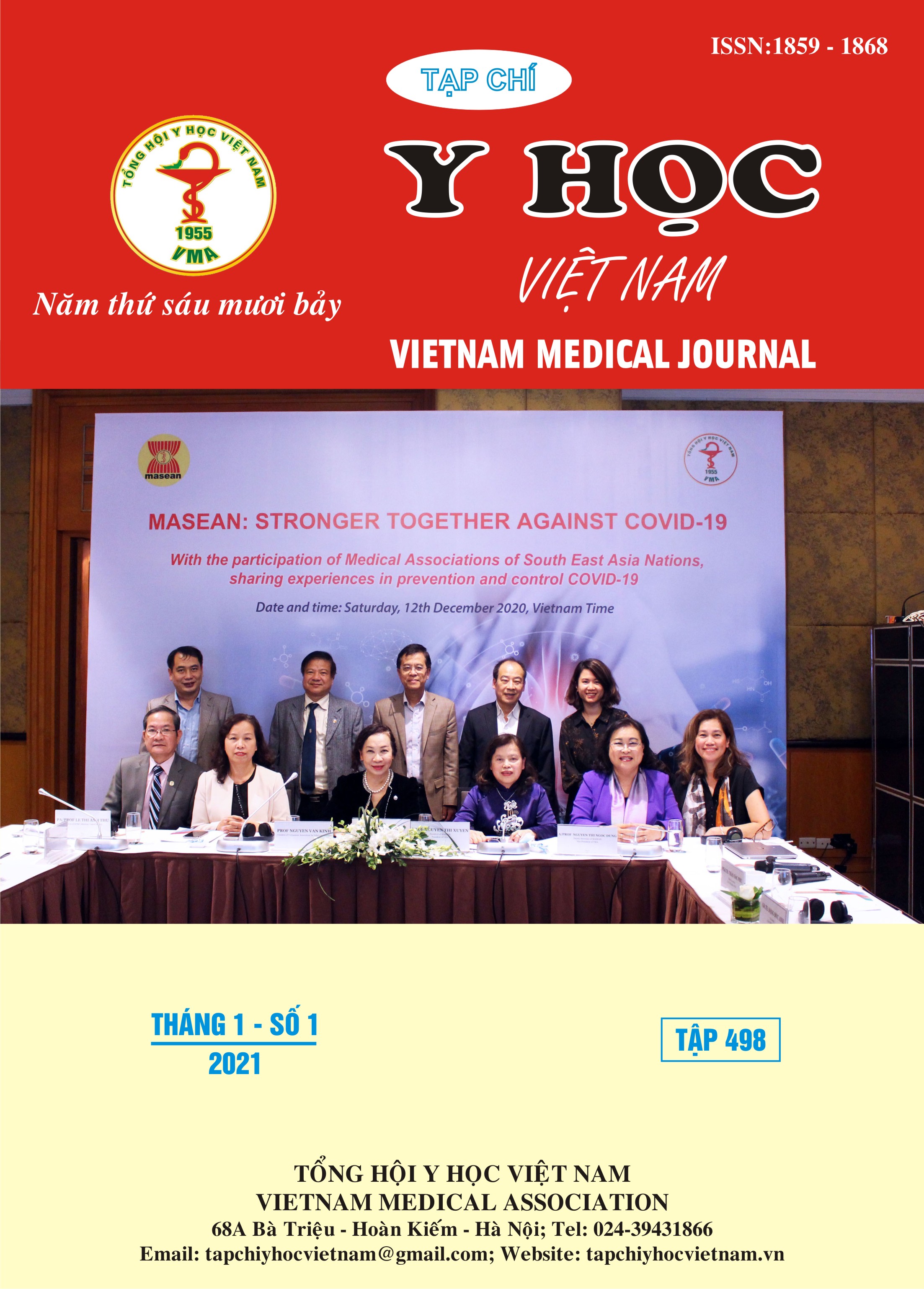THE RESULTS OF MICROSURGERY OF MYELOMENINGOCELE
Main Article Content
Abstract
A study with 57 spina bifida pediatric patients was taken to reveal the role of microsurgery. Patients and method: a retrospective, cross-section, describre trial from January 2018 to September 2020 at National Pediatric hospital. Results: mean age: 6± 1.3 (months); 89.4% were infants. The female/male was 1.15/1. 10.5% patients was diagnosed prenatal period. Prensentation: motor-sensitve deficit (10.5%); sphinterian deficit (15.8%); hydrocephalus (15.8%). 78.9% lession located at sacro-coccyx segment; Spina bifida account for 96.5%. At the follow: normal location of spina was showed at 7% (compared with 3.5% presurgery); 78.95% of children had a good-grade quality of life. Conclusion: Spina bifida still was a challenge lession in neurosurgery
Article Details
Keywords
Myelomenigocele; spina bifida; microsurgery
References
2. Lorber, J., Results of treatment of myelomeningocele. An analysis of 524 unselected cases, with special reference to possible selection for treatment. Dev Med Child Neurol, 1971. 13(3): p. 279-303.
3. Vinh, T.Q., Ứng dụng của phương pháp kích thích thần kinh cơ trong phẫu thuật thoát vị tủy màng tủy. Y học thành phố Hồ chí Minh, 2012. 16(4): p. 247-252.
4. Özek, et al., Spina Bifida. 2008.
5. Greenberg, M.S. and N. Arredondo, Handbook of Neurosurgery 6th ed. 2006 Lakeland, FLNew York: Greenberg Graphics; Thieme Medical Publishers.
6. Pier, D.B., et al., Magnetic resonance volumetric assessments of brains in fetuses with ventriculomegaly correlated to outcomes. J Ultrasound Med, 2011. 30(5): p. 595-603.
7. Chern, J.J., et al., Clinical evaluation and surveillance imaging in children with spina bifida aperta and shunt-treated hydrocephalus. J Neurosurg Pediatr, 2012. 9(6): p. 621-6.


